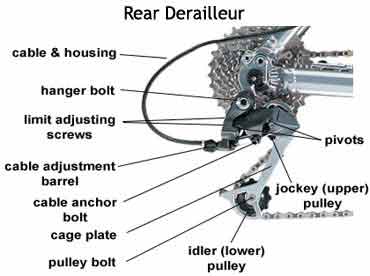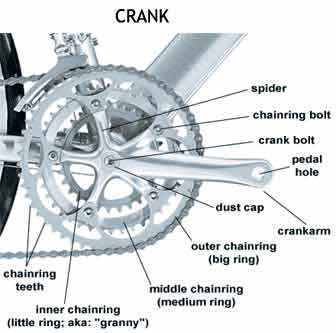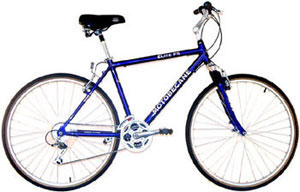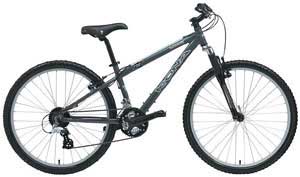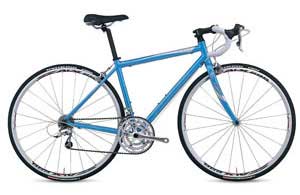Now you know what the Gear Shifting Components are, it is time to learn the Very Basics of the Mountain Bike Techniques of Shifting Gears.
- The right-hand lever operates the rear gear (moving the chain across the sprockets)
- The left-hand lever operates the front mechanism, which shifts the chain from one chain-wheel to another.
- When the chain is on the big chain-wheel you will be in a bigger gear – usually used for riding along the flat or downhill.
- The smaller (inner) chain-wheels are used for uphill work, riding with luggage, or into a strong headwind, or perhaps around town when you need a low gear to cope with lots of stopping and starting at traffic lights or junctions.
- With the chain on the smallest rear wheel sprocket, you will be in a big gear, travelling further for each revolution of the pedals.
- The biggest sprocket provides your lowest gear for hill climbing or starting off from junctions.
- Unlike a three-speed hub gear, a derailleur mechanism needs you to keep pedaling to get the chain to shift from one sprocket (or chain-wheel) to the next.
- Depending on the size (number of teeth) of the chain-wheels and the sprockets there will be some overlap of gear sizes between the different chain-wheels.
- Whether you ride on the roads or on trails your gear changing has to be instinctive to avoid any problems with traffic or technical terrain. Therefore it is very necessary to understand how the different Gear Shifting Components act together.
Gear Shifting Examples
Now you know the Gear Shifting Components and the Very Basics of Gear Shifting, it is time to give you some examples of Gear Ratios and other Gear Shifting Examples.
The Heaviest Gear Ratio
This is the big ring (48 teeth) combined with the smallest sprocket (11 teeth). This actually means that for every 1 revolution of your leg, it will make the rear wheel rotate 4.36 times (48 ÷ 11 = 4.36). This will achieve relatively high speed which is good for downhill.
The Lightest Gear Ratio
This is the small chain-ring (20 teeth) combined with the biggest sprocket (36 teeth). This will give you a revolutionary ratio of 0.55 to one revolution of pedal. This ratio is used in climbing really steep mountains or hills.
Shifting gears
Shift the gears 1-3 noches at a time rather from smallest to biggest in one motion. However, systems like the Rapid-Fire system only allows up to 3 noches up per shift so that would be guide enough.
Don’t use the big plate with the biggest sprocket and the small plate with the smallest sprocket. This will cause the chain to have a “cross-over” effect which will either cause strain on the chain and or make it too loose respectively.
When using the middle plate, the complete range of the sprockets can be used.
Lastly, anticipate the terrain and shift in advance. This will help in having continuous momentum. Example, when approaching a climb, you can start shifting to a lower gear. You wouldn’t want to get caught with a heavy gear at the start of a climb. This will make you loose momentum and may cause you to be left behind thus forcing you to apply more effort than needed in the first place.




 Basics of shifting gear techniques and examples
Basics of shifting gear techniques and examples